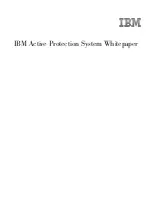
Communicating With a Process
Initiating and Communicating With Processes
5–4
107365 Tandem Computers Incorporated
TACL stores the values of parameters assigned by the PARAM command and sends
these values to processes that request parameter values when the processes are started.
Processes that request the parameter values interpret the values.
CLEAR PARAM
param-name
clears a specific parameter value; CLEAR ALL
PARAM clears all parameter values. TACL clears all parameter values when you use
the LOGOFF command.
Using DEFINEs
DEFINEs allow you to specify a named set of attributes and values for a process.
There are several types of DEFINEs, many of which are intended for use with specific
subsystems:
A MAP DEFINE allows you to substitute a logical DEFINE name for an actual file
name.
A TAPE DEFINE allows you to specify labeled-tape attributes for a subsequent
tape operation.
A SPOOL DEFINE allows you to set parameters for a spooler job.
The DEFAULTS DEFINE contains standard default values such as your default
volume and subvolume name.
The SORT and SUBSORT DEFINEs allow you to specify parameters for the
FASTSORT program.
You can use the #DEFINESAVE and #DEFINERESTORE built-in functions to save a
copy of one or more DEFINEs for later use. This operation is similar to a #FRAME
and #UNFRAME for a set of variables; you can save the current set of DEFINEs and
restore them when you are finished with your work.
For more information about how to create and use DEFINEs, see the TACL Reference
Manual or the Guardian User's Guide.
Communicating With a
Process
To communicate with a process, you must provide a communication path to the
process. The type of path depends on how the process communicates with other
processes. For example, some processes, such as FUP and PERUSE, use IN and OUT
files. Other processes, such as Pathway requesters, use $RECEIVE, write to their home
terminal, or use INV and OUTV variables.
The type of path also depends on whether the process opens your TACL process or
your TACL process opens the other process.
If your work involves communicating with subsystems and utilities that must
communicate with a terminal, the processes probably use IN and OUT files. Your
TACL program can simulate a terminal if you follow these steps:
1.
Start the process. The process opens your TACL process and issues a
WRITEREAD operation.
2.
Wait for a prompt from the process (from the WRITEREAD operation).
















































